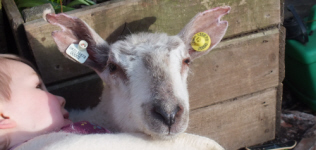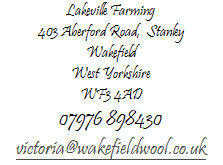






In the nineteenth century Wakefield and it surrounding regions has a strong textile manufacturing sector with companies dealing in raw wool, spinning yarn, weaving cloth and producing reclaimed wool known as ‘shoddy’. Some of the great objects in the museum’s textile heritage collection include fabric samples, sample books, advertisements, packaging and photographs which document everyday life on the mill floor.
Until the early nineteenth century Wakefield served the burgeoning West Yorkshire textile industry as an administrative and logistical hub. Wakefield’s extensive waterway networks were made navigable in the eighteenth century and the town prospered as a trading centre for both raw materials and finished cloths. When trading declined in the nineteenth century Victorian Wakefield shifted to worsted spinning. In the late 1800s several mills were built in Wakefield and neighbouring Ossett.
Wakefield Museum’s textile heritage collection consists of approximately 260 objects. The collection includes objects such as carding combs, bobbins, textile samples, ephemera and photographs. A large proportion of these objects have local provenance which can be established through donor information, productions or association. A range of textile manufactures are represented however this is a relatively small collection which demonstrates that textile heritage was not a collecting priority in the past.
Collections Overview
Although Wakefield Museums’ collection of textile heritage objects is relatively small in comparison to that of other local museum services, it does contain a number of objects which tell unique stories of the region.
The collection contains objects which represent various stages in cloth manufacture. Fibre preparation is represented by two large nineteenth century combs for processing wool and jute fibres and a number of smaller modern carding combs used in the Clarke Hall handling collection. A selection of wooden bobbins and shuttles link to the spinning and weaving processes. The collection also includes a wooden Weavemaster handloom which would have been used in teaching or for domestic crafts.
Some examples of textiles produced in the local area have been collected including: knitting yarn samples, sample books, synthetic fabric samples and finished products (costume, bedding etc.). The majority of textile samples in the collection are composed of synthetic fibres and do not represent the range of fabrics which were produced in the region. Manufacturers represented by these textile samples include: Rawsons Ltd., Fur Fabrics Ltd., Courtaulds Fibres and Thomas B. Ramsden & Co.
A large proportion of the textile heritage collection is made up of ephemera objects. These objects represent the widest range of companies manufacturing in the region. The collection includes correspondence, advertisements, catalogues, packaging and knitting patterns. Among the larger items of ephemera are an advertisement for George Lee & Sons, a Wakefield mill auction poster and a display case showing cotton processing donated by the manufacturer Paton and Baldwin.
The photography collection contains a number of images relevant to the subject of textile manufacture in the Wakefield region. Images can be found of the working interiors of Calverts Ropery in Wrenthorpe, Bekeart Textiles factory in Pontefract and M. P. Stonehouse at Albion Mills. The photography collection also documents key events in the lives of those working in this industry during the twentieth century. For example, images of a fire at Holdsworth Mill in Wakefield in 1963, a group photograph of staff from Cohen and Wilks Ltd at the company’s Annual Ball and images of Paton and Baldwin’s staff at a trade fair in the 1920s.
Wakefield One is situated on Burton Street, behind the Council's County Hall building and Wakefield Museum is located on the lower ground floor with Local Studies.
It is well worth taking a visit to Wakefield Museum in the Wakefield One building, they have been working closely with the West Yorkshire Textile Heritage project to preserve and document the history of textiles in Wakefield and West Yorkshire (below is an extract from the website of the West Yorkshire Textiles Heritage project)
http://westyorkstextileheritageproject.wordpress.com/collections/wakefield/
Wakefield One
Burton Street
Wakefield
WF1 2DD
Tel: 01924 305356